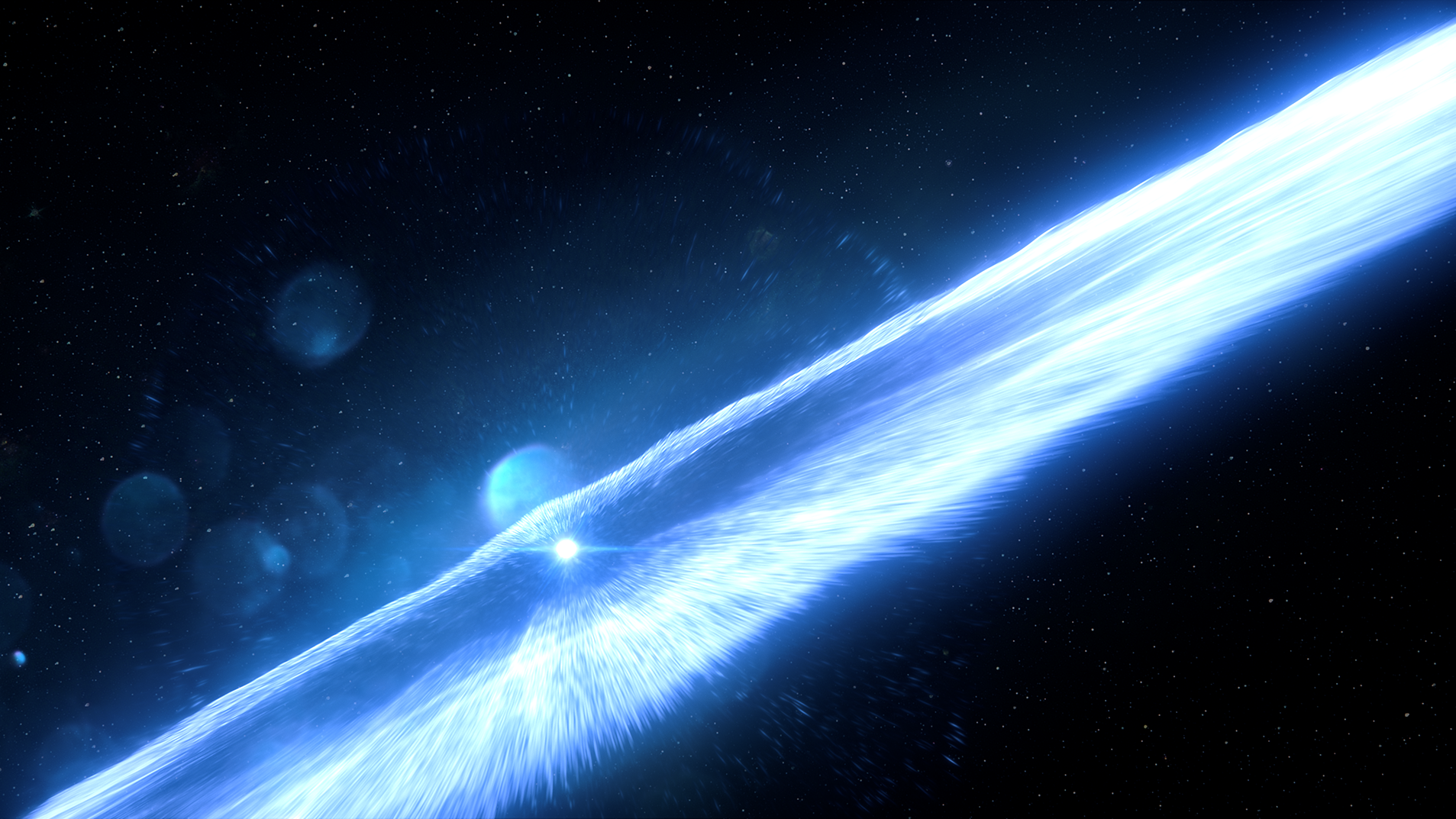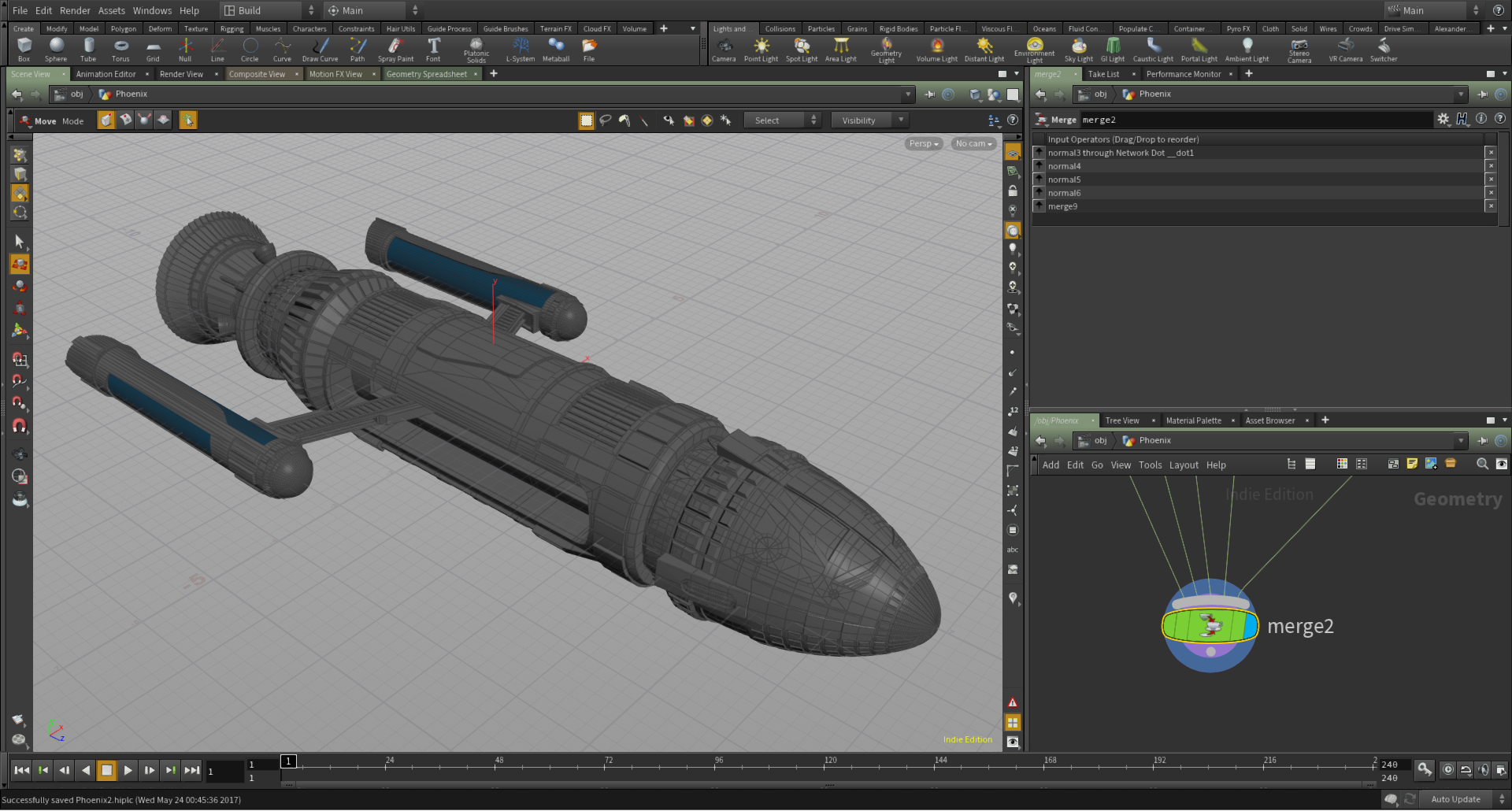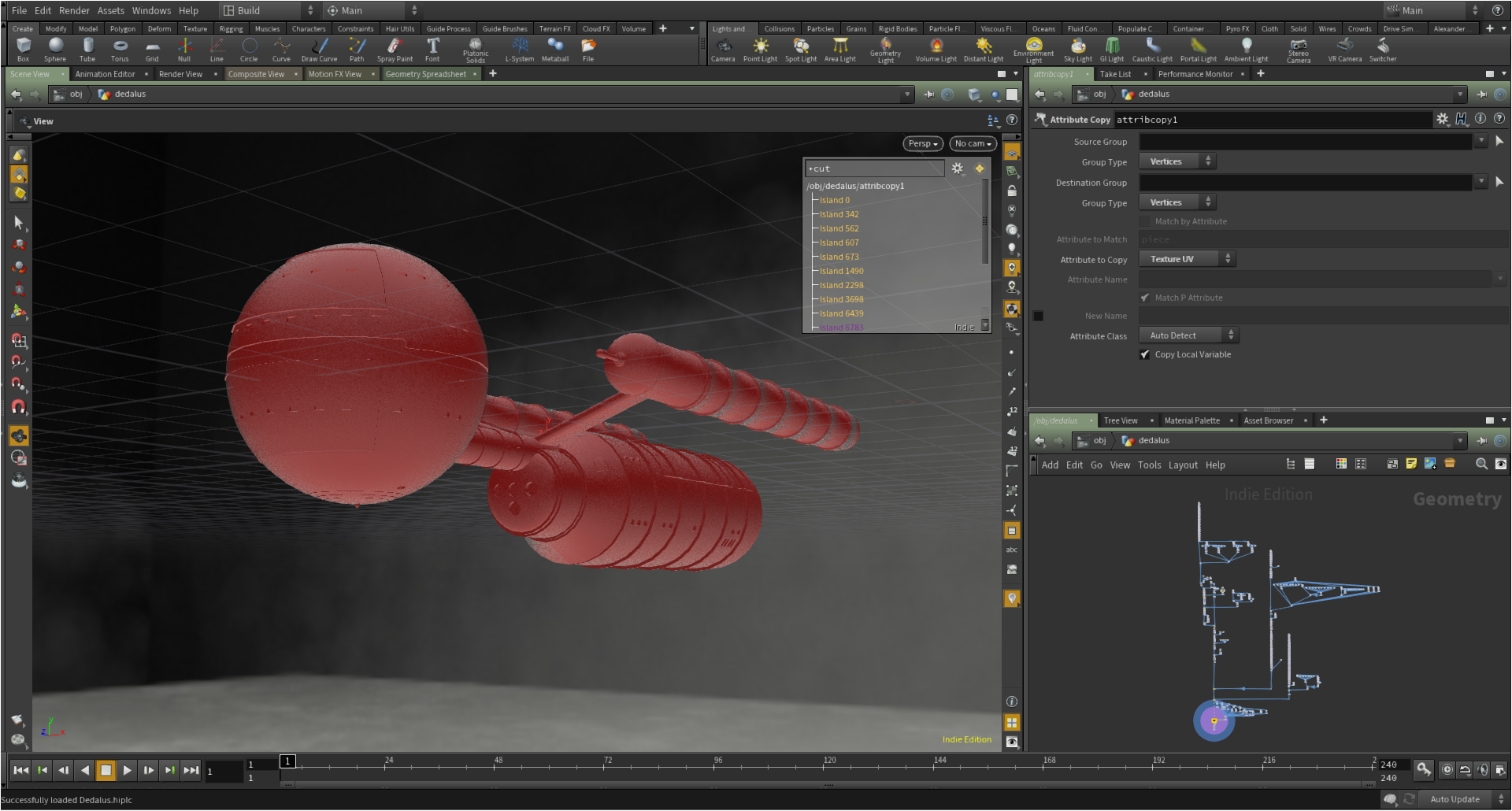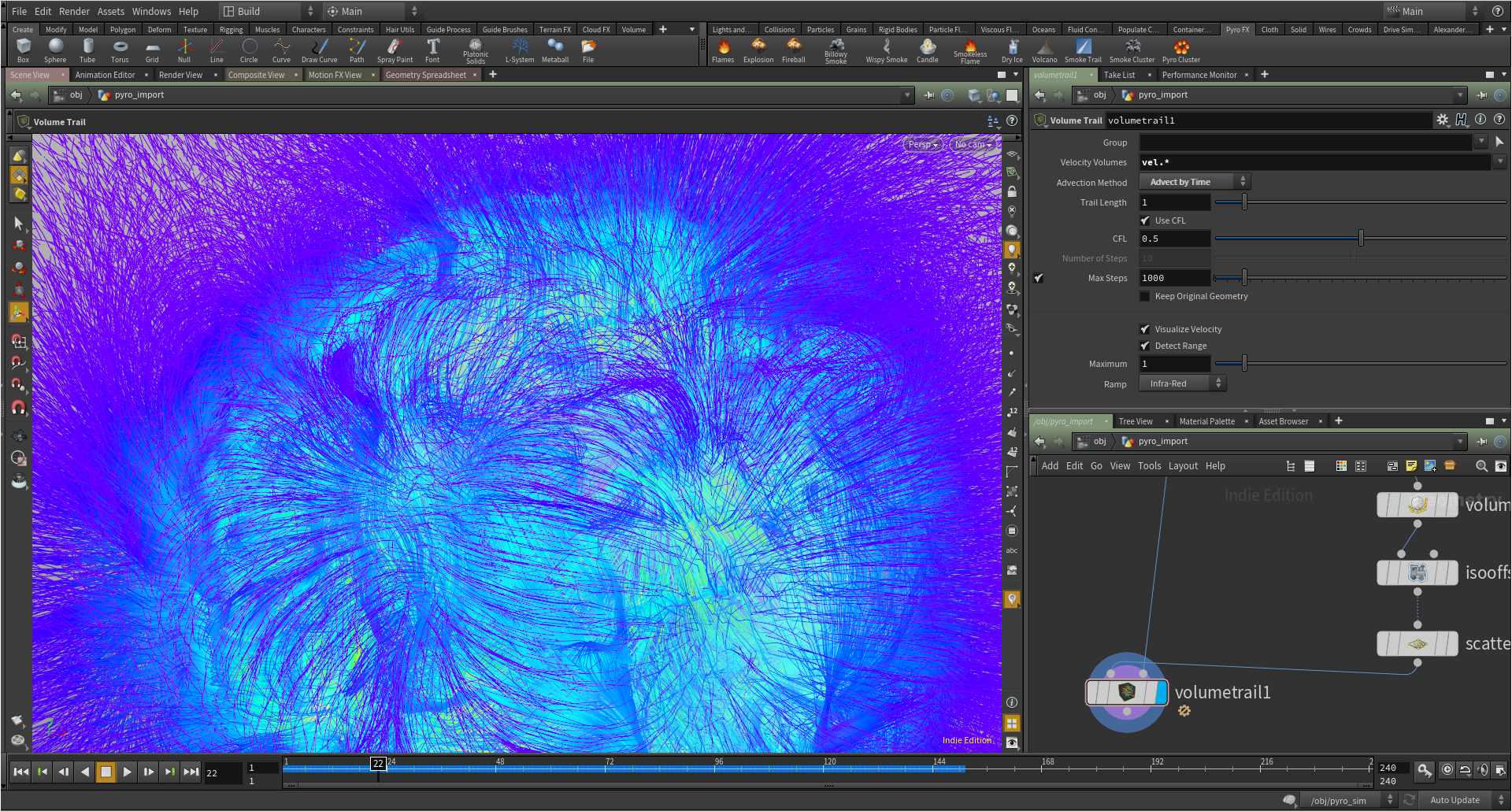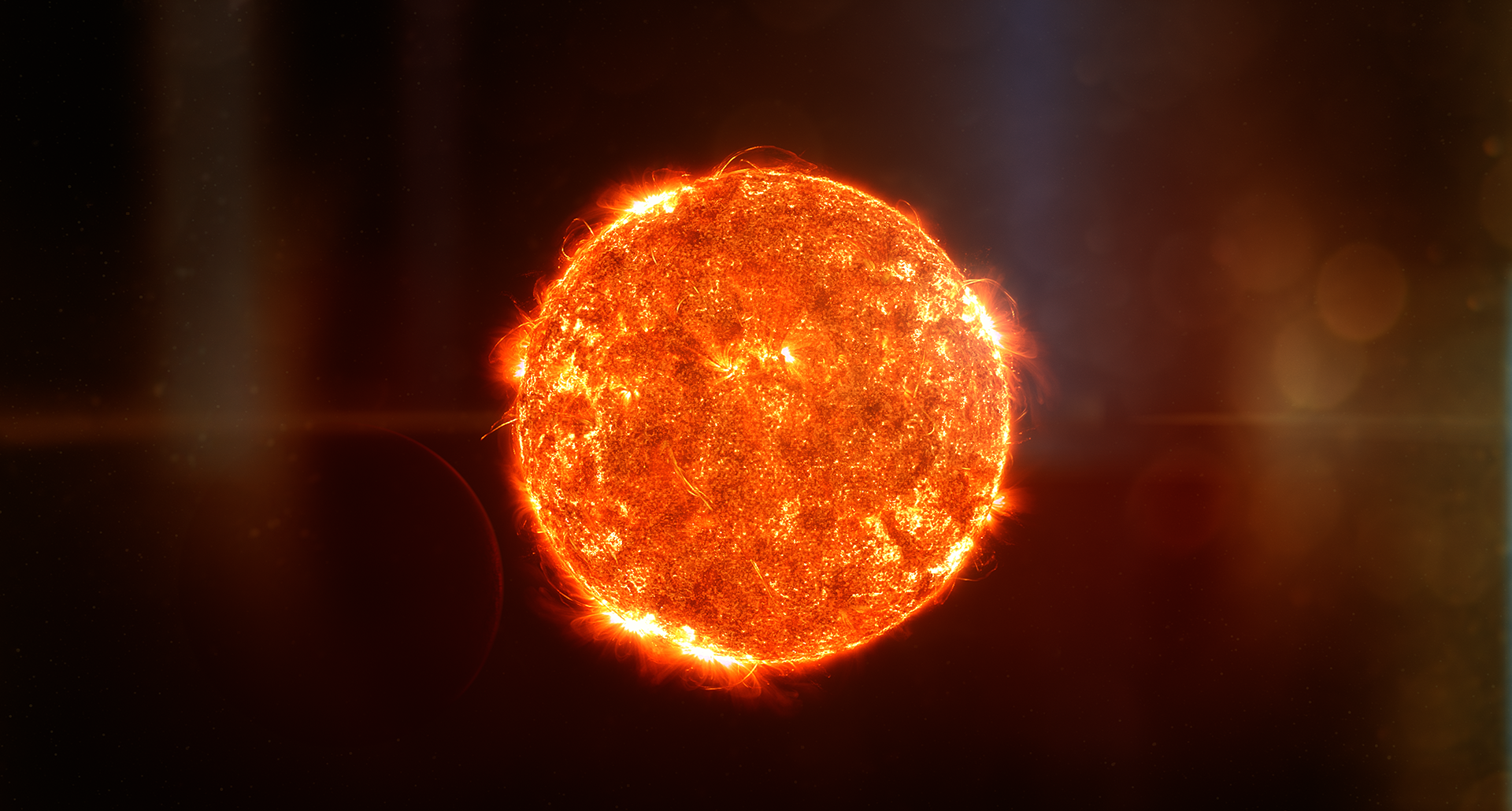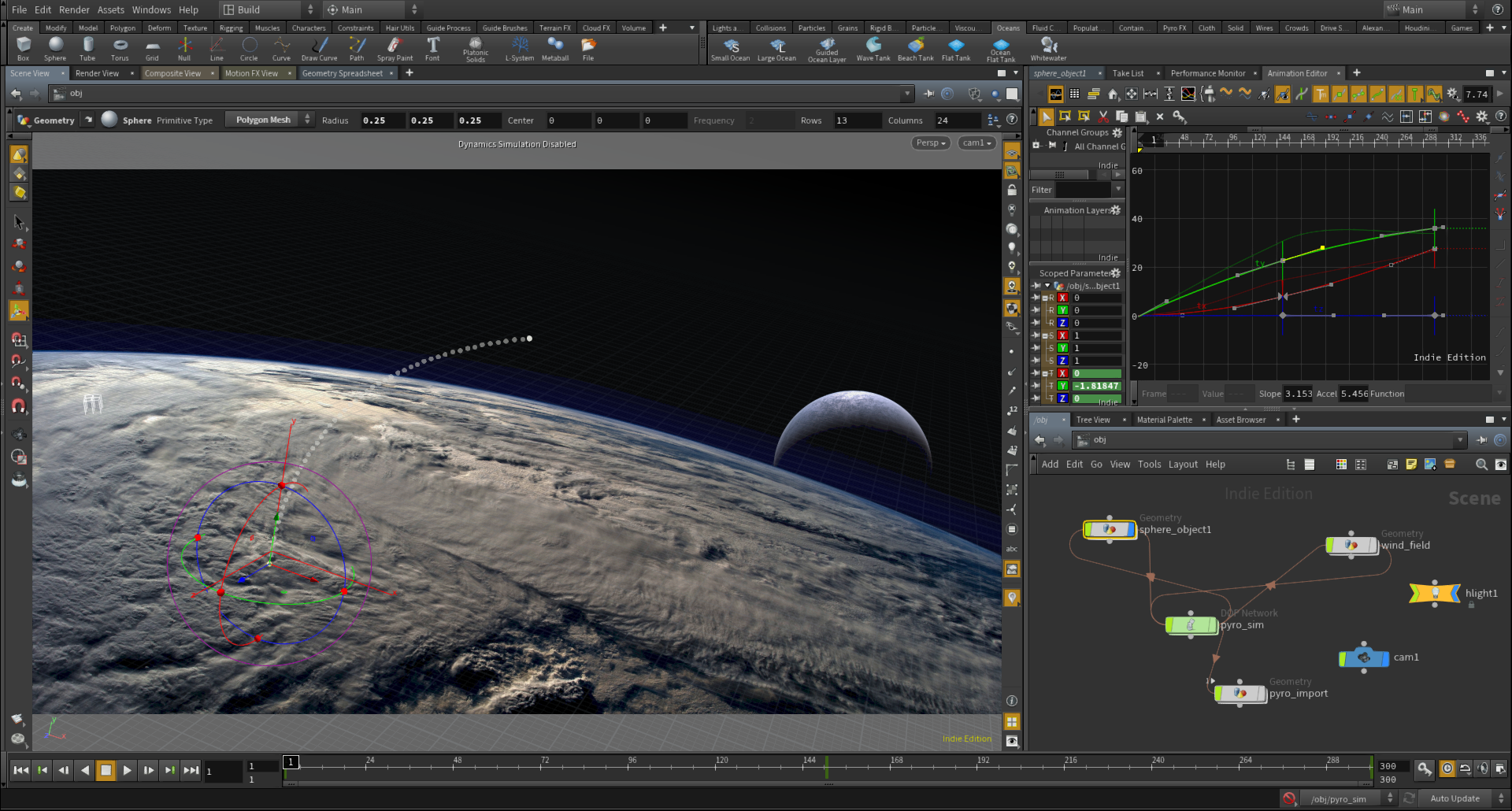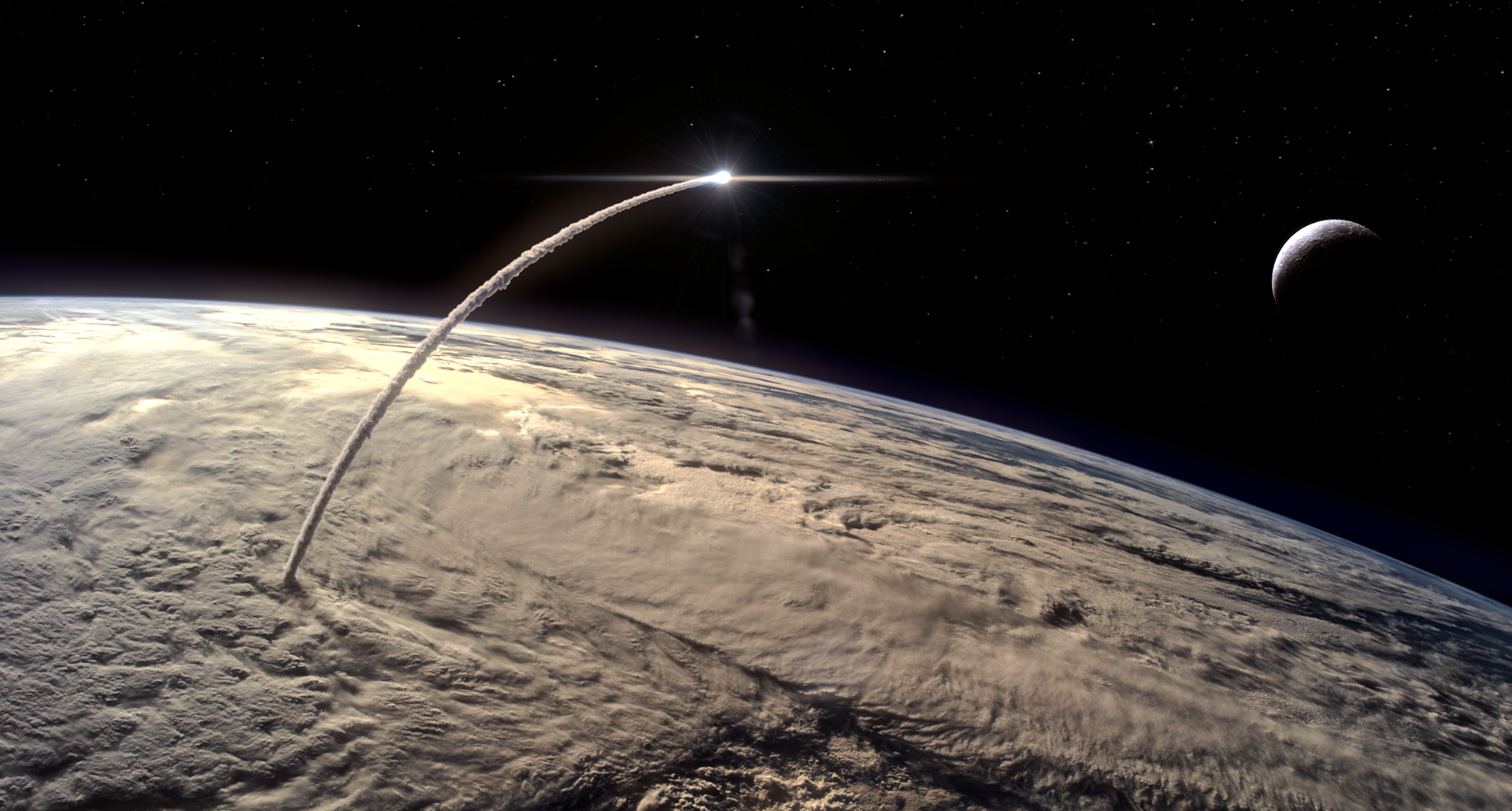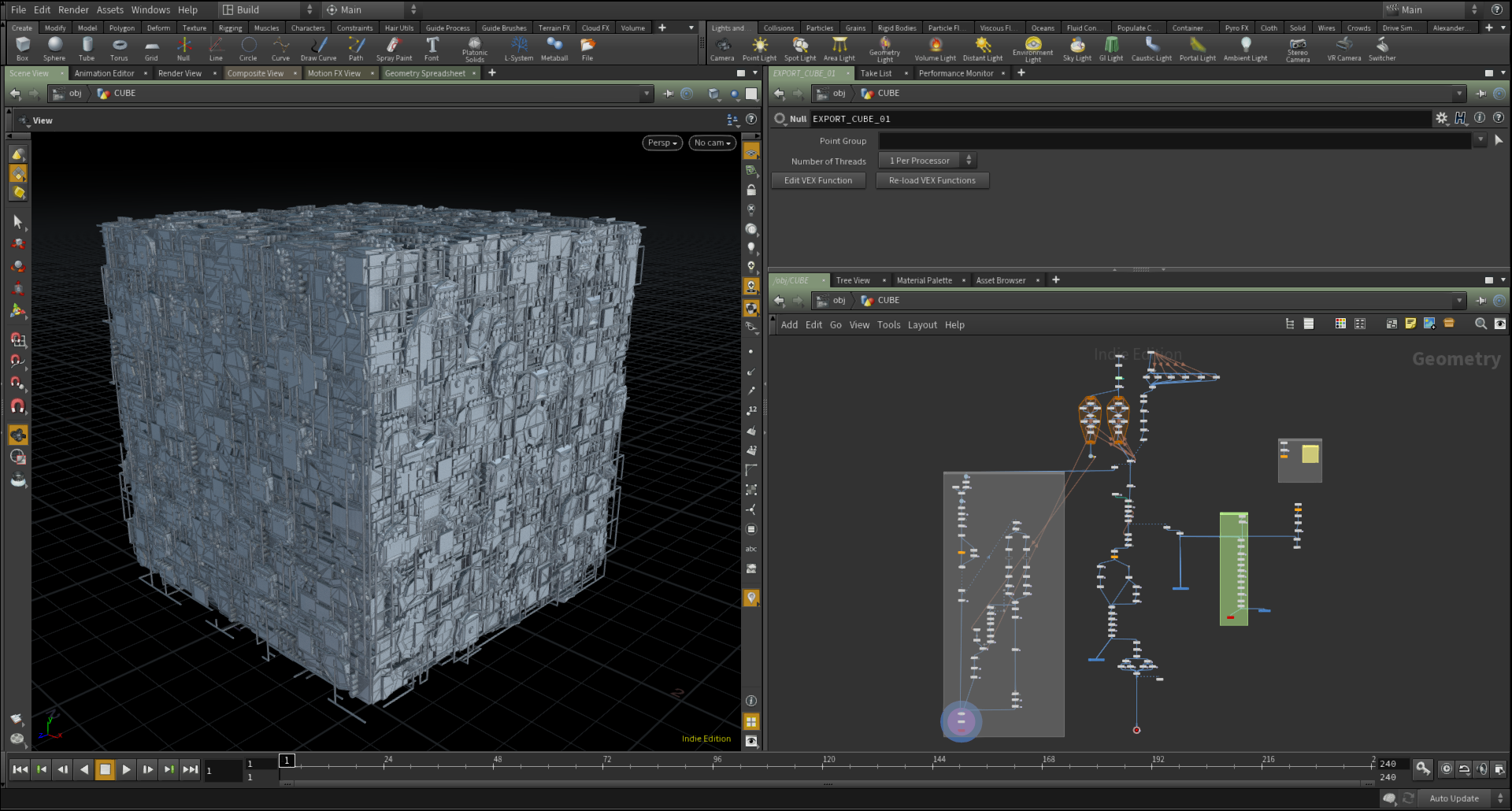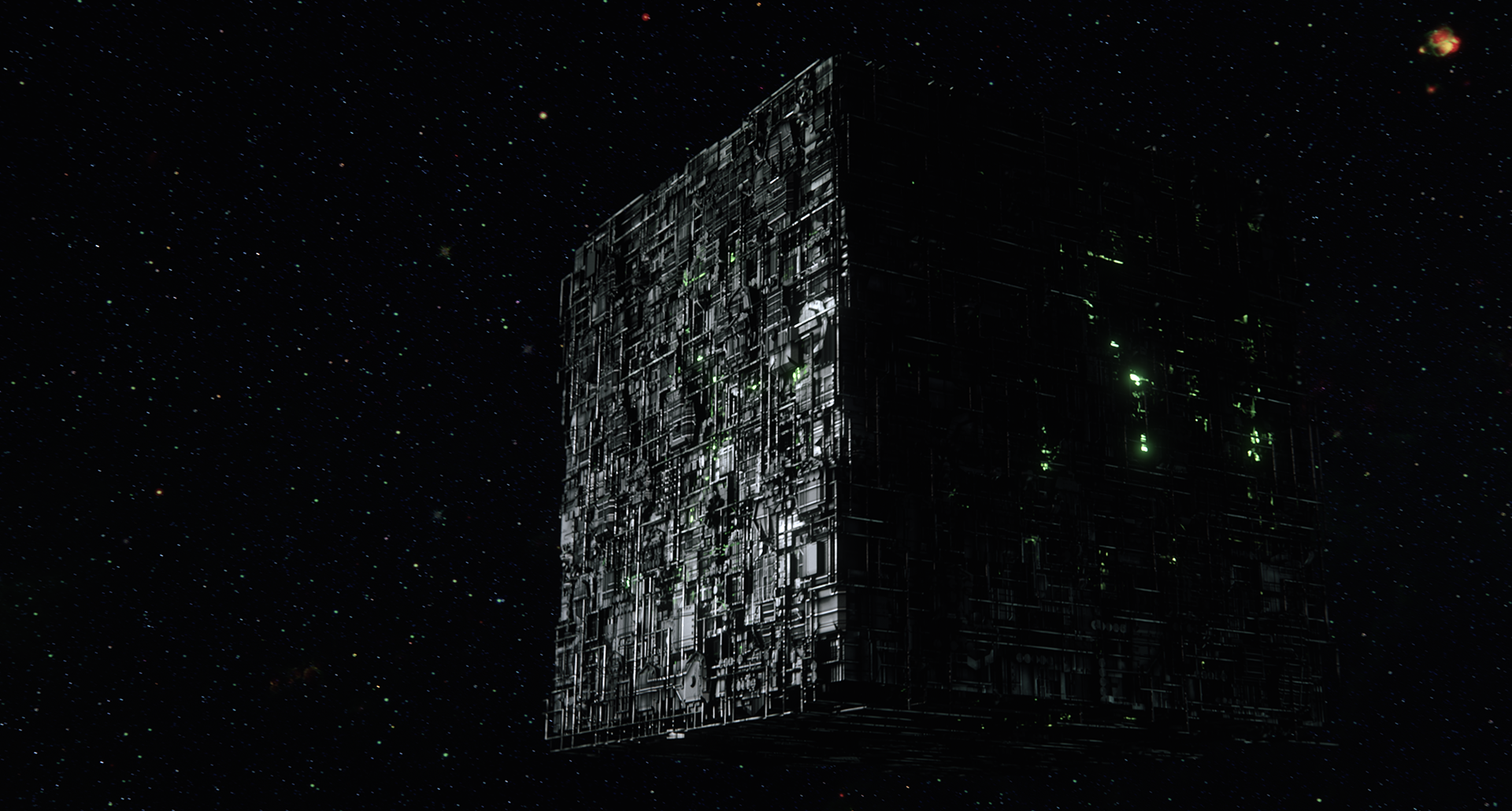New Horizons is a total conversion mod for the video game Stellaris. This mod allows players to select from a large number of civilizations in the Star Trek universe and includes lore appropriate starships, species, events, and more. SideFX recently caught up with Alex, Musa, and Marc of Paradoxical Development Group to talk about their work on ST: New Horizons and how they used Houdini on the project.
SideFX: Tell us a bit about yourself and your background.
Alex: My Name is Alexander Weide, I’ve been doing 3D Animation and all kinds of image effects since my 12th birthday. My first 3D Tool was “Simply 3D” and “Monzoom 3D”, since then I’ve had the chance to learn a lot of different tools within a world where CGI effects are playing a much deeper role. Over the years I gained a strong background in creating visual effects and CG-graphics, even photography. For 5 years I have been an Independent VFX Artist working on a variety of projects from photography to 3D design to high-end VFX projects. In ST: New Horizons I am the problem solver for all 3D tasks, I also directed and produced the Assimilation Trailer and act as a consultant on advertising questions for the project.
Musa: Hi, I am Musa von Homeyer, one of the 2 founders of ST: New Horizons. Modding Paradox games has been a hobby of mine for a few years now. When Stellaris came out it was very clear to me that this was a chance to make the Star Trek game I always wanted. To realize the sheer scope of the project I needed to build sophisticated tools and scripts to implement the hundreds of components and technologies into the game.
Marc: My name is Marc Schmelzer, aka G-man. I am 34 years old and live in Germany.
Before ST: New Horizons I did not do any 3D art. While learning how to do this kind of stuff for the first time, my friend Alexander had a big impact on my learning curve. I initially started working with Blender, just to learn the first steps in 3D art, but then quickly switched to Houdini 15 because it does a great job at creating procedural models. While using Blender I figured out, that even if you know the basics, it will take years to become a good 3D artist. Now, after one year I use Blender and Houdini naturally to create models or prepare models that we get from our fans. Unfortunately 3D art is like a drug, once you start, you don't want to stop. I try to enthuse every person who is willing to create models.
SideFX: What is the ST: New Horizons project all about? How did it get started and what was the goal?
Marc: Today, our ambition is nothing short than making the best Star Trek game of all time. The initial goals of New Horizons were rather more humble - we simply wanted to create a fun Star Trek mod for Stellaris. This was back in early 2016, when we knew Stellaris was on the way but before it was actually released. The team back then was rather small, just a few people with experience and knowledge of modding other games made by Paradox Interactive, the creators of Stellaris. Since early 2016, we’ve increased in size, scope and vision. We now have over seventy contributors, all working together on the project.
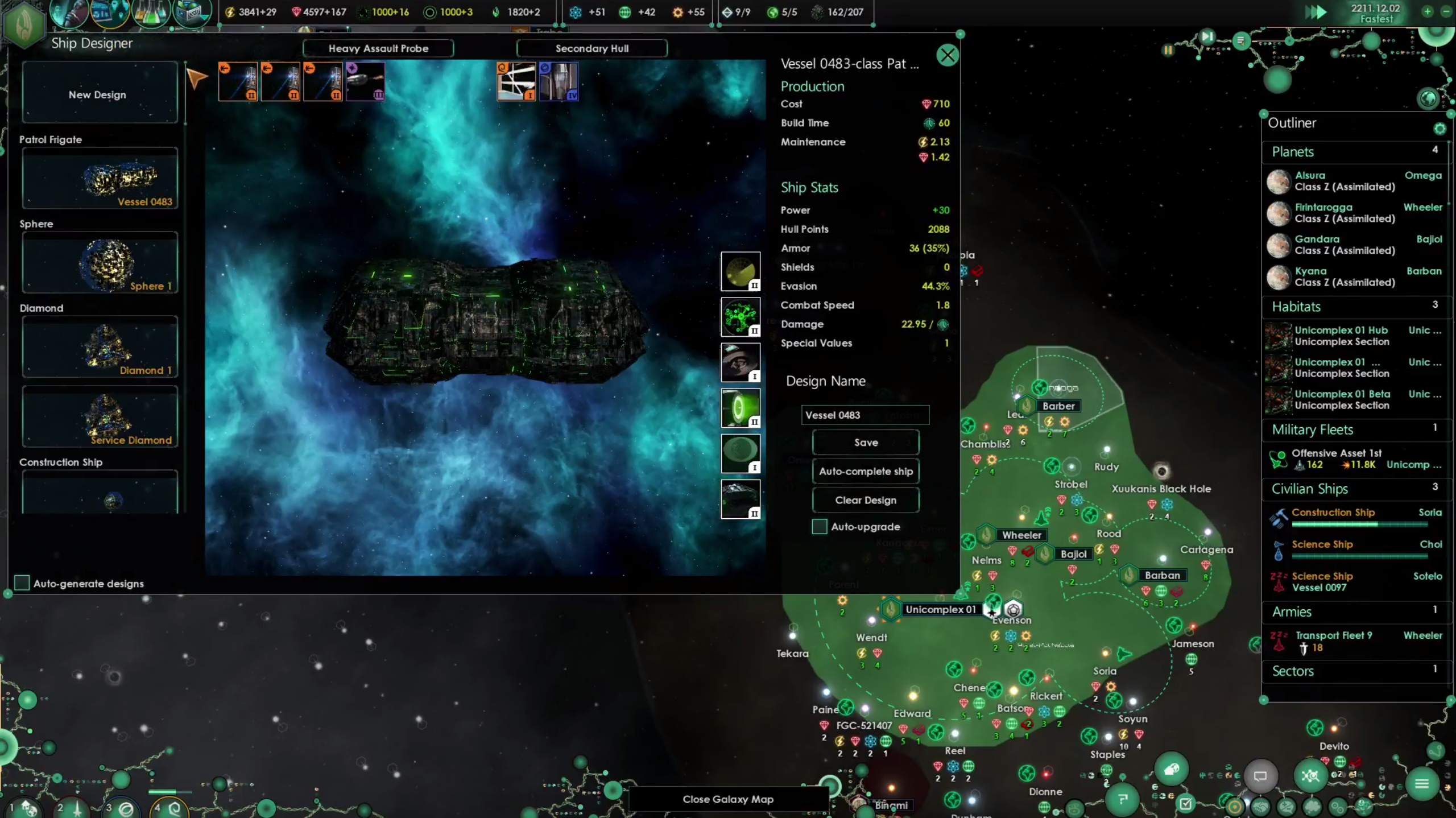
SideFX: ST: New Horizons is a mod for a game named Stellaris. What exactly is a “mod” and how is it different from a regular video game?
Musa: Mod, short for “modification”, is basically any sort of adjustment or change to an existing video game. These can range from tiny changes, like tweaking the damage value of a sword, to huge, sweeping changes. New Horizons is a 'total conversion mod' - which means we have changed every single thing about the original game so that nothing is the same but the pure code. We have our own UI, music, voice acting, 2D art, 3D models, writing, events, species, etc. Nothing remains from the original Stellaris game.
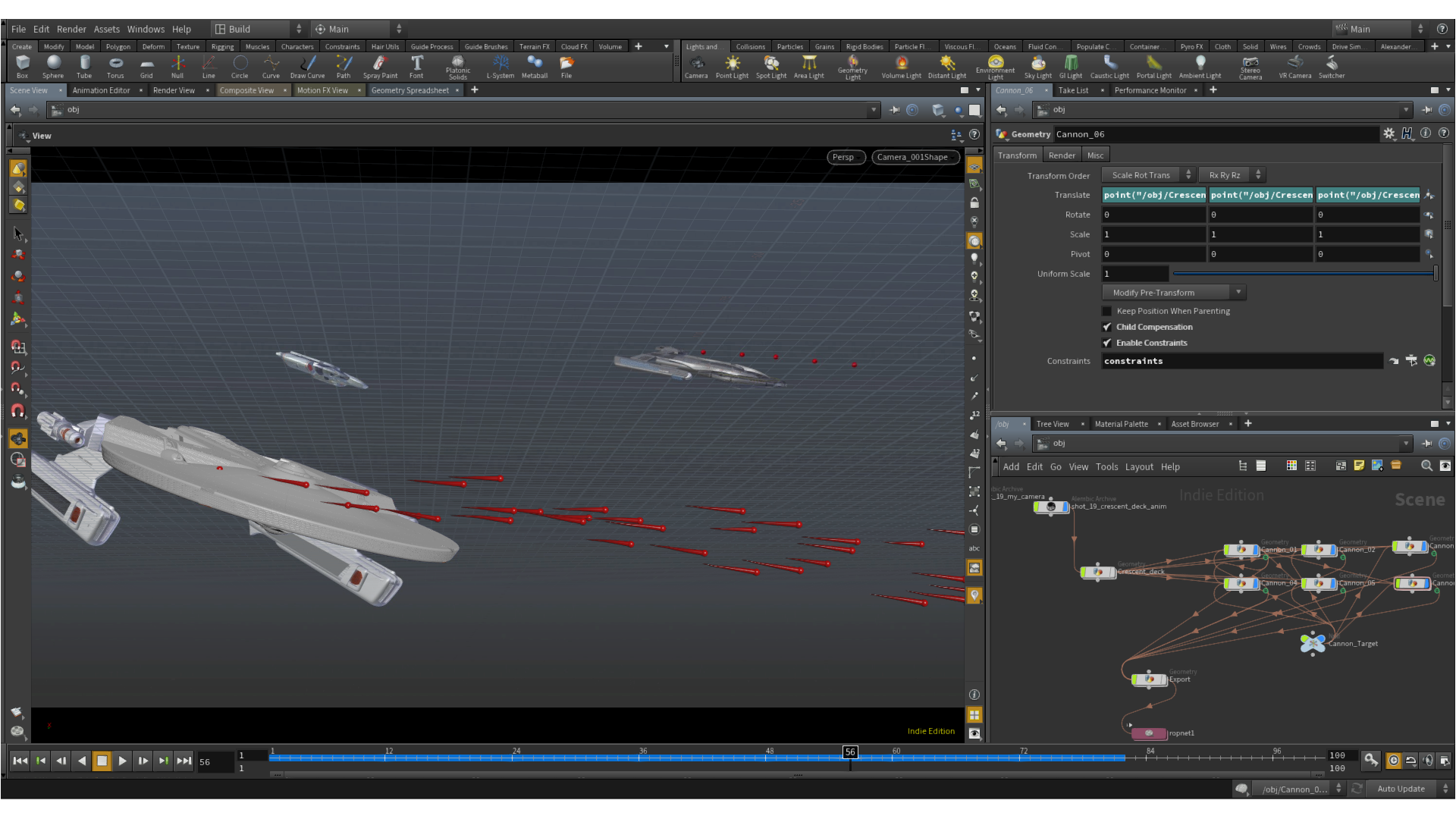
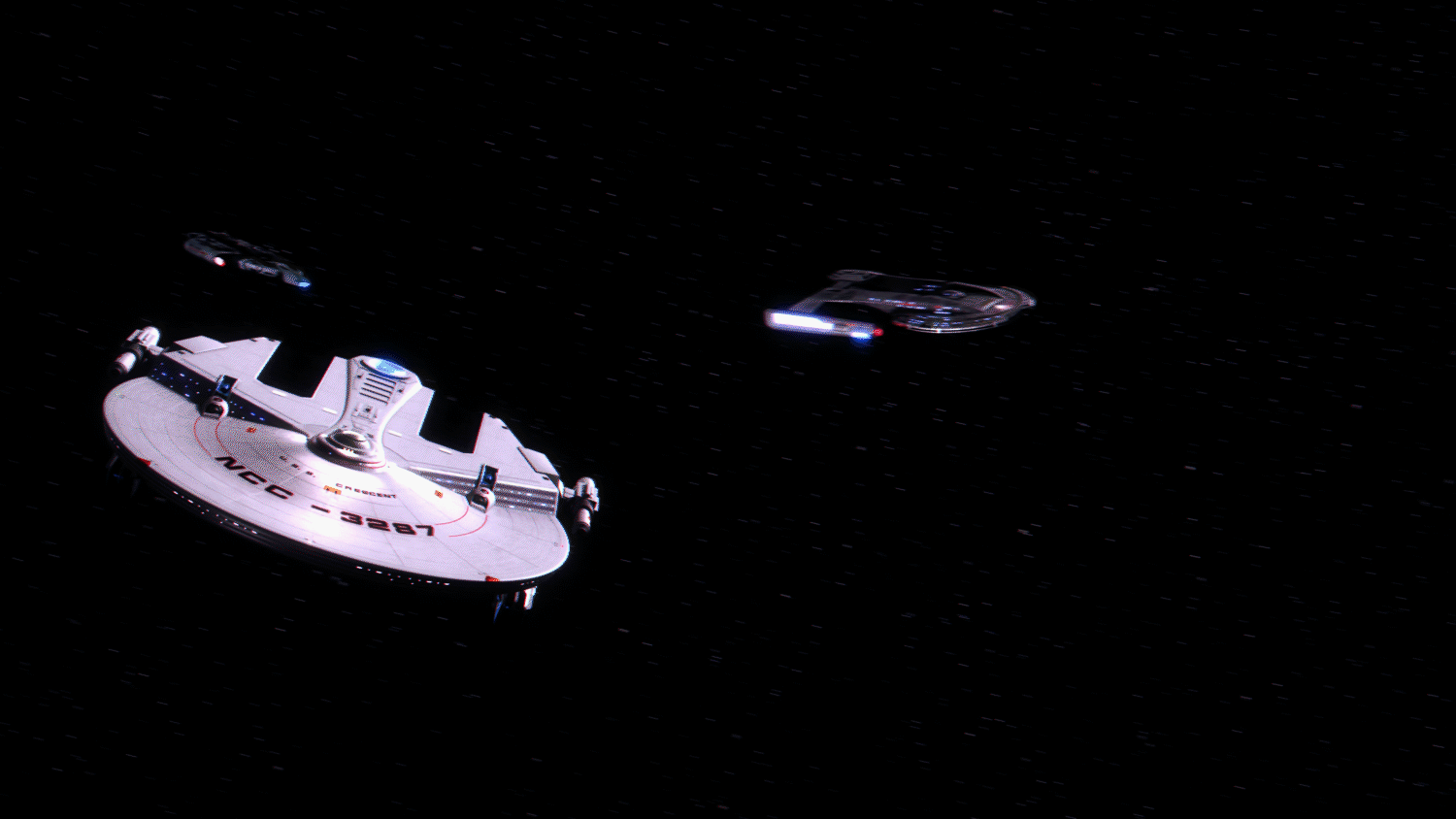
SideFX: Houdini is one of the 3D tools you’re using to make ST: New Horizons. How exactly are you using Houdini to build the game mod?
Alex: When we started the game project we had a lot of 3D artists from around the world contributing 3D models. All of these models look fantastic, but they aren’t consistent in style. Each 3D artist has different skillsets and workflows. A lot of the ships were created with more than one UV set, which was a problem for the game engine. So we built a semi-automatic baking converter in Houdini which assisted us heavily with importing ships into the game. Besides baking, the tool needed to take care of a lot of other operations like repositioning and automatic rescaling processes, texture checks, and exporting. It took one week to build the exporter, which we were then able to use to convert more than 150 ships during one week’s time in work hours. We also used it extensively in the modeling process of new ships and for correction of failed meshes. In short, Houdini is our swiss knife for a lot of operations from modeling to baking to final texture export.SideFX: You recently released a 4K trailer video for ST: New Horizons, can you tell us about the goal of the trailer and what the production was like?
Alex: That is correct and the workload was immense, mainly because only two people of the core team created all the CGI for the 4K trailer. I was responsible for directing, editing, Houdini simulations, lighting, render setup, and compositing. Marc was the animator of the ship torpedoes and cameras. Musa consulted and helped out with rendering. We knew right from the beginning that this would be an insane amount of work, and we only had 6 month to get the job done. The reason for making a trailer was not only to give our players a nice game with a deep amount of story, but also to create an environment around the game as well. We wanted to go beyond what previous mod teams have done. The trailer shows a typical gameplay experience of our mod, and it was the best way to introduce the Borg too. The production started when we had finished the Borg models back in February. We decided to make the trailer in 4K, not just full HD, because 4K is becoming the standard these days. The look and feel of the trailer is placed in the old “Star Trek: The Next Generation” era series. Our trailer pipeline was built around Blender 3D and Houdini was one of the core FX tools. For compositing we used Fusion Lite and Natron. The mastering took place in Davinci Resolve Lite.
SideFX: How was Houdini used to make the trailer video?
Alex: We used Houdini for a lot of different tasks, like modeling and correction of starships, including modeling variations of the Federation Miranda class ship, the Borg Cube, and also for the modeling of the Phoenix Warp Rocket. All of the pyro explosions, beam fire and FEM simulations were made in Houdini and exported with a self-developed workflow tool to Cycles for rendering. A great advantage of using Houdini in the FX process was that we were able to reuse all explosions and simulation-caches across the trailer, meaning we only simulated around 7 explosions and then retimed them to each specific explosion starting frame. This was quite easy and saved a lot of time. To make them unique in every shot we turned them by 90 degrees in regards to camera location, so they looked like a different explosion in every shot.
We also used Houdini for the sun shot at the beginning, the rocket start in near-earth space, and for the final explosion at the end. The sun is a large fluid simulation made with zero gravity and internal gravity forces for simulating more than 24 gravity poles. The flares of the sun are rendered with the micropolygon renderer of Mantra in 2D and then reused and retimed as texture patches across the sun surface. The fluid simulation contains up to 120 million particles and was exported to Cycles for rendering. The Mantra rendered flares are composited onto the sun in Natron. The explosion at the end is a 40 million particles simulation, rendered in Mantra with up to 4 layers, and composited in Natron.
SideFX: Rendering a two and half minute video at 4K resolution can be a big challenge. How did you handle the rendering of the trailer and how long did it take?
Alex: We needed to render around 3200 Frames in 4K. This is a challenge for everything, not only in terms of CGI rendering but also in compositing. The compositing and the rendering took 4 times longer to calculate in comparison to full HD. A single composite of 200 frames could take around 20 hours for rendering. So 90% of the time we rendered at night. For rendering all of the 21 CGI Shots we used a combination of Mantra and Blender Cycles because we only had two computers to render with, suited with Intel I5’s, Linux Mint and Ubuntu, and an Asus 1050 TI OC Expedition GPU. I decided to render as much as we could with Blender Cycles on GPU because it’s really fast and provides a nice quality, and also because most of the ships were already shaded in Blender. Chris Kuhn and Raul Mamoru provided most of the ships for us. I wish we would have been able to render in Mantra on GPU only, this would have saved us a lot of time because the exporting process to Cycles was very time consuming. A render process based only on CPU was not an option because of the amount of images that needed to be rendered in just 6 months. When we finished with the trailer video, the entire trailer team and contributors had worked on it for more than 2200 hours. In the hot phase of the production, I finished one shot in one week, from start to final composite. Rendering a general frame in 4K took about 15 to 20 minutes. At this point I have to say that we cheated a bit, in terms of rendering. We only rendered the raw layers in full HD but then converted all direct and indirect light and bounce passes to 4K in Natron. I developed a upscaling workflow which works quite nice in the full CGI shots, but this also required an additional amount of render time and a special compositing workflow. We rendered all the CGI-raw, and all the final comp-frames within 650 hours. All in all, it was a challenge from start to finish.
I want to point out that we were impressed by the updates to Houdini during the last 6 months, I would say that if we started a new trailer right now, I would probably use Mantra much more. This would save a lot of time because we wouldn’t need to export all of the simulations to Cycles. I was stunned when I tested the new Material Network and the updated Principle Shaders, they are much faster than when we started the trailer project. It’s a really stunning result in the development of Mantra.
SideFX: The Borg spaceship is very detailed and impressive, how was it created?
Alex: One of the biggest challenges was to build the Borg cubes and Borg spheres because of all the tiny wires and plates they have. It was a process of back and forth which took around one month. After that we had a full procedural Borg cube ready to be implemented into the game. For creating the model of the Borg Cube, we studied all the reference images that we could find on the internet and in the TV series and films. We found out that almost all the Borg cubes look different throughout the TV series. The only link or common theme between all the cubes is their artificial, mechanical look. So we needed to find a way to recreate this look and feel, but how? The first approach was to build the model in a very simple form with tons of mechanical textures. However, this didn't look like an intimidating Borg cube, it looked more like a box of metal scrap. The next approach was to rebuild the cube polygon by polygon, sadly this approach didn’t end up looking like a real, living Borg cube either. The final solution was to create around 20 different metal pattern objects, which were then copied across a multi-layer point cloud. I used the Copy SOP heavily in combination with “for each loops” to accomplish this. The modeling tools in Houdini 16 are very precise and fast, and the new boolean tools were the key to getting the right cube model. It is also very important to note that the wire structure around the cube helps a lot with adding density to the model. This was achieved with “shortest path functions”, and different point starting patterns and rules. All of these different Copy SOPs and wires gave so much density and artificial individuality to the model, we were then able to place green light boxes inside of the cube to get it looking accurate and alive.SideFX: What are the development plans for ST: New Horizons going forward?
Musa: We’ve reached the beta phase of the mod and the groundwork is done, next we intend to switch to a theme-based update policy from now on. Every new major patch will have a focus on a specific theme or species to ensure we don’t miss any details. With our new game setup scripts we will also be adding more scenario based map modes to the game, like the newly introduced mirror maps.
SideFX: What advice would you give to somebody who is interested in making their own game mod?
Marc: Just do it! If this is your first mod, know your limits. Seek out other modders, they tend to be very friendly and supportive of new people. Also, listen to your audience. Get advice, learn the ropes, and see what other mods are doing before you attempt anything on your own.
If you own the game Stellaris, you can get ST: New Horizons for free on the Steam Workshop:
